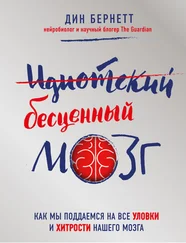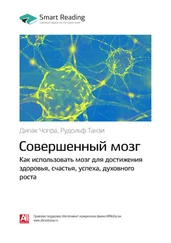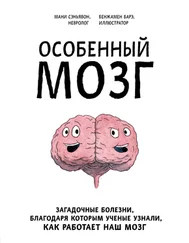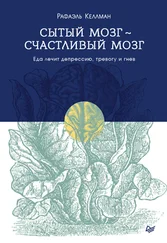Quintero, E., et al., Effects of context novelty vs. familiarity on latent inhibition with a conditioned taste aversion procedure. Behavioural Processes, 2011. 86 (2): p. 242–249.
Bouter, L.M., et al., Sensation seeking and injury risk in downhill skiing. Personality and individual differences, 1988. 9 (3): p. 667–673.
Smith, S.G., The essential qualities of a home. Journal of Environmental Psychology, 1994. 14 (1): p. 31–46.
Hall, E.T., The Hidden Dimension. 1966, Doubleday.
Aiello, J.R. and D. E. Thompson, Personal space, crowding, and spatial behavior in a cultural context, in Environment and culture. 1980, Springer. p. 107–178.
Lourenco, S.F., M. R. Longo, and T. Pathman, Near space and its relation to claustrophobic fear. Cognition, 2011. 119 (3): p. 448–453.
Kennedy, D.P., et al., Personal space regulation by the human amygdala. Nature neuroscience, 2009. 12 (10): p. 1226–1227.
Evans, G.W. and R. E. Wener, Crowding and personal space invasion on the train: Please don’t make me sit in the middle. Journal of Environmental Psychology, 2007. 27 (1): p. 90–94.
Schwartz, B., The social psychology of privacy. American Journal of Sociology, 1968: p. 741–752.
Berman, M.G., J. Jonides, and S. Kaplan, The Cognitive Benefits of Interacting With Nature. Psychological Science, 2008. 19 (12): p. 1207–1212.
Ulrich, R., View through a window may influence recovery. Science, 1984. 224 (4647): p. 224–225.
Dobbs, D., The Green Space Cure: The Psychological Value of Biodiversity. 2007, November.
‘Tiny house movement’ – Wikipedia, 2017. Available from https://en.wikipedia.org/wiki/Tiny_house_movement.
Bouchard, T.J., Genes, environment, and personality. SCIENCE-NEW YORK THEN WASHINGTON-, 1994: p. 1700–1700.
Oishi, S. and U. Schimmack, Residential mobility, well-being, and mortality. Journal of personality and social psychology, 2010. 98 (6): p. 980.
Jang, Y. and D. E. Huber, Context retrieval and context change in free recall: recalling from long-term memory drives list isolation. Journal of Experimental Psychology: Learning, Memory, and Cognition, 2008. 34 (1): p. 112.
Rubinstein, R.L., The home environments of older people: A description of the psychosocial processes linking person to place. Journal of Gerontology, 1989. 44 (2): p. S45-S53.
Winograd, E. and W. A. Killinger, Relating age at encoding in early childhood to adult recall: Development of flashbulb memories. Journal of Experimental Psychology: General, 1983. 112 (3): p. 413.
Lollar, K., The liminal experience: loss of extended self after the fire. Qualitative Inquiry, 2009.
Jones, R.T. and D. P. Ribbe, Child, adolescent, and adult victims of residential fire: Psychosocial consequences. Behavior Modification, 1991. 15 (4): p. 560–580.
Kim, K. and M. K. Johnson, Extended self: medial prefrontal activity during transient association of self and objects. Social cognitive and affective neuroscience, 2010: p. nsq096.
Proshansky, H.M., A. K. Fabian, and R. Kaminoff, Place-identity: Physical world socialization of the self. Journal of environmental psychology, 1983. 3 (1): p. 57–83.
Anton, C.E. and C. Lawrence, Home is where the heart is: The effect of place of residence on place attachment and community participation. Journal of Environmental Psychology, 2014. 40: p. 451–461.
University of Bologna – Wikipedia. 2017; Available from: https://en.wikipedia.org/wiki/University_of_Bologna.
Wilson, M. Stunning Documentary Looks At Life Inside A Marble Mine. 2014 2014–11–14; Available from: https://www.fastcodesign.com/3038512/stunning-documentary-looks-at-life-inside-a-marble-mine.
ReviseSociology, What Percentage of Your Life Will You Spend at Work? in ReviseSociology. 2016, @realsociology.
Statistics – Work related stress, anxiety and depression statistics in Great Britain (GB). 2017; Available from: http://www.hse.gov.uk/statistics/causdis/stress/.
Statistics, B.o.L. Number of Jobs, Labor Market Experience, and Earnings Growth: Results From A Longitudinal Survey. 2017; Available from: https://www.bls.gov/news.release/nlsoy.toc.htm.
Erickson, K.I., C. H. Hillman, and A. F. Kramer, Physical activity, brain, and cognition. Current Opinion in Behavioral Sciences, 2015. 4 (Supplement C): p. 27–32.
Swaminathan, N., Why Does the Brain Need So Much Power? Scientific American, 2008. 29 (04): p. 2998.
Sleiman, S.F., et al., Exercise promotes the expression of brain derived neurotrophic factor (BDNF) through the action of the ketone body β-hydroxybutyrate. Elife, 2016. 5: p. e15092.
Godman, H., Regular exercise changes the brain to improve memory, thinking skills. Harv Health Lett, 2014.
White, L.J. and V. Castellano, Exercise and Brain Health – Implications for Multiple Sclerosis. Sports medicine, 2008. 38 (2): p. 91–100.
Kohl Iii, H.W. and H. D. Cook, Physical Activity, Fitness, and Physical Education: Effects on Academic Performance. 2013.
Gonzalez-Mulé, E., K. M. Carter, and M. K. Mount, Are smarter people happier? Meta-analyses of the relationships between general mental ability and job and life satisfaction. Journal of Vocational Behavior, 2017. 99 (Supplement C): p. 146–164.
Thorén, P., et al., Endorphins and exercise: physiological mechanisms and clinical implications. Medicine & science in sports & exercise, 1990.
Almeida, R.P., et al., Effect of cognitive reserve on age-related changes in cerebrospinal fluid biomarkers of Alzheimer disease. JAMA neurology, 2015. 72 (6): p. 699–706.
Scarmeas, N. and Y. Stern, Cognitive Reserve: Implications for Diagnosis and Prevention of Alzheimer’s Disease. Current neurology and neuroscience reports, 2004. 4 (5): p. 374–380.
Kurniawan, I.T., et al., Effort and Valuation in the Brain: The Effects of Anticipation and Execution. The Journal of Neuroscience, 2013. 33 (14): p. 6160.
Hagura, N., P. Haggard, and J. Diedrichsen, Perceptual decisions are biased by the cost to act. Elife, 2017. 6: p. e18422.
Herz, R.S. and J. von Clef, The influence of verbal labeling on the perception of odors: evidence for olfactory illusions? Perception, 2001. 30 (3): p. 381–391.
Elliott, R., et al., Differential Response Patterns in the Striatum and Orbitofrontal Cortex to Financial Reward in Humans: A Parametric Functional Magnetic Resonance Imaging Study. The Journal of Neuroscience, 2003. 23 (1): p. 303.
Читать дальше
Конец ознакомительного отрывка
Купить книгу












